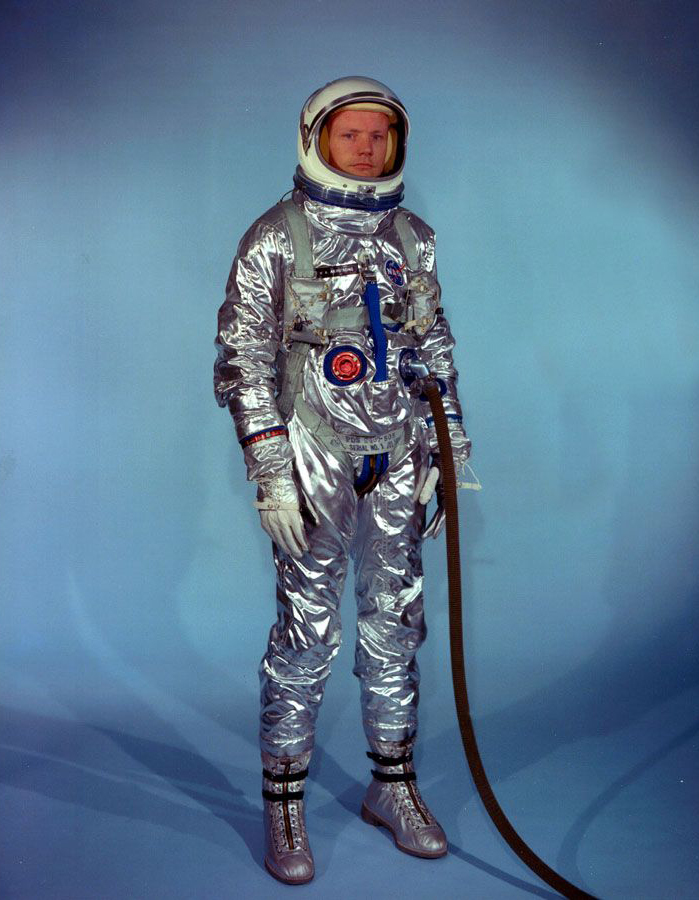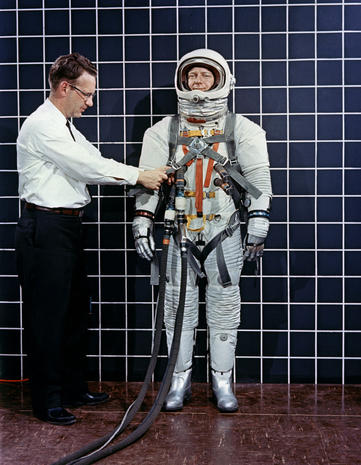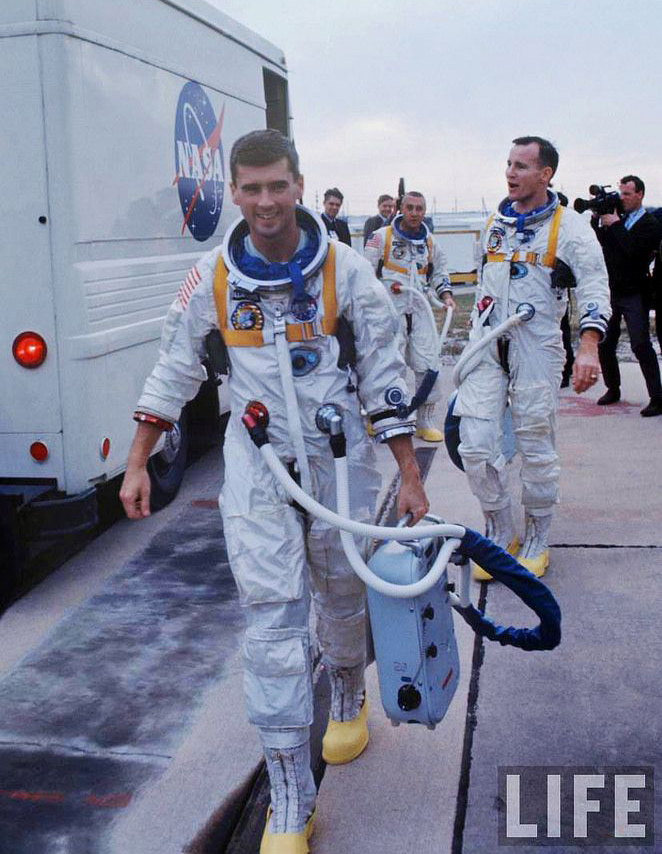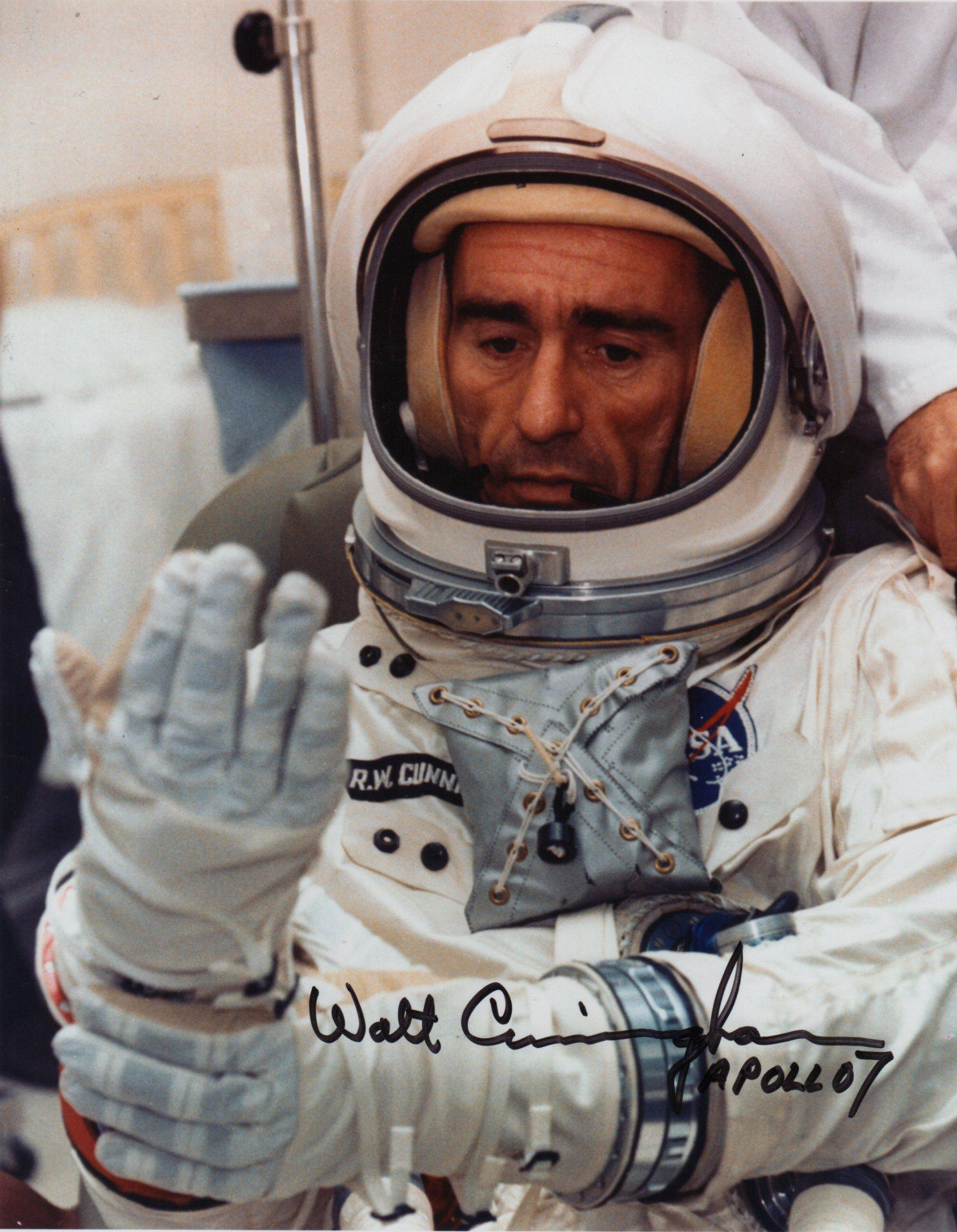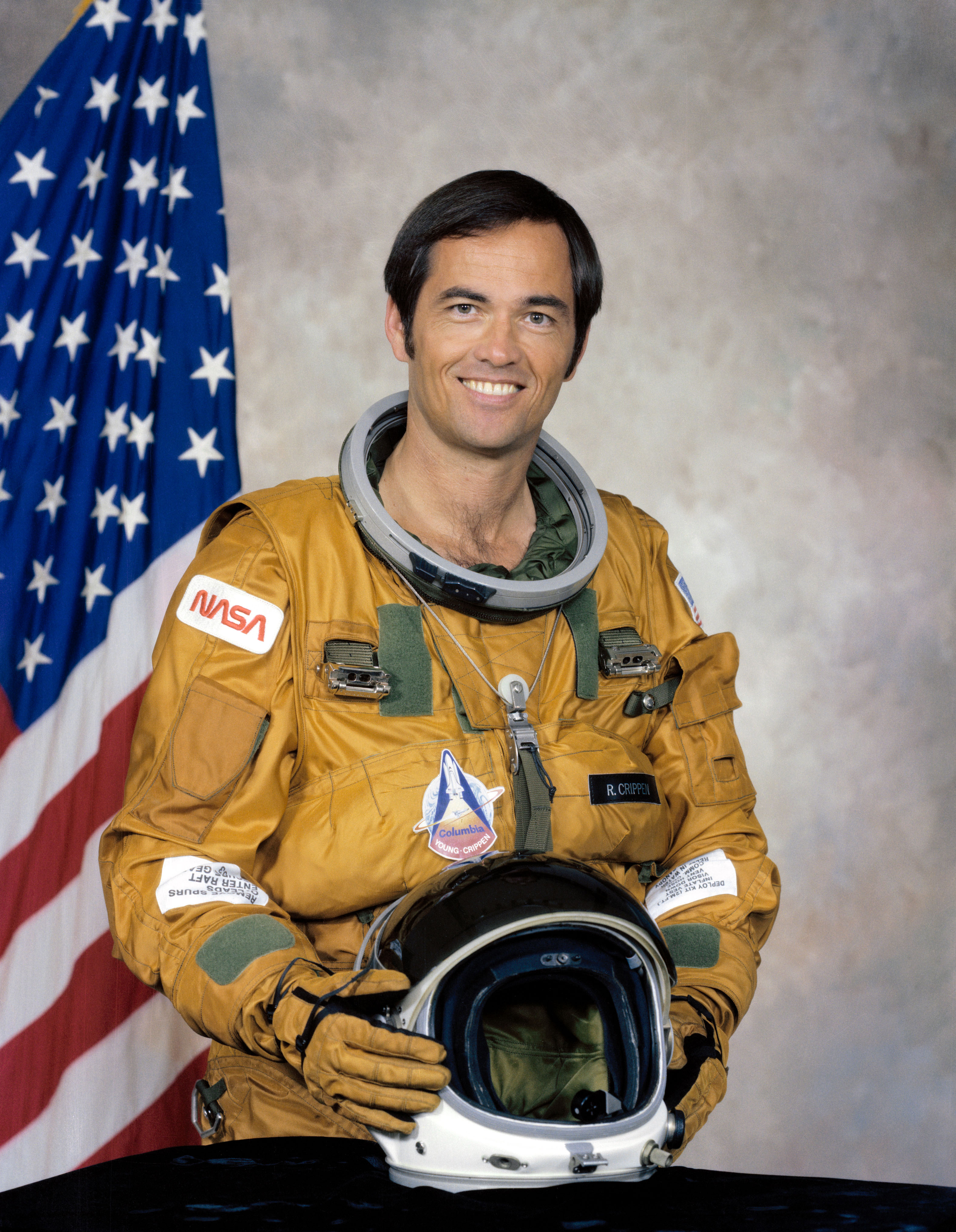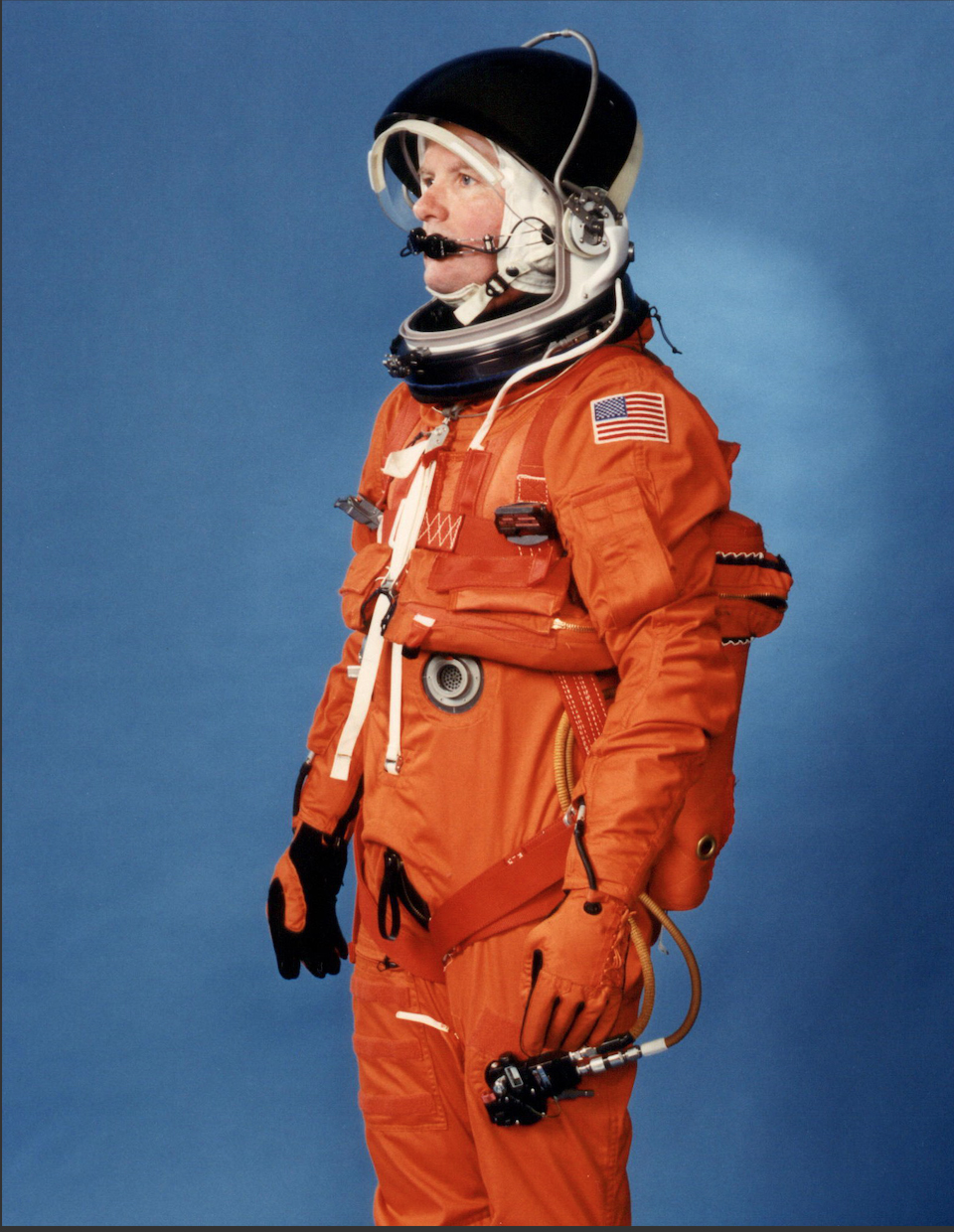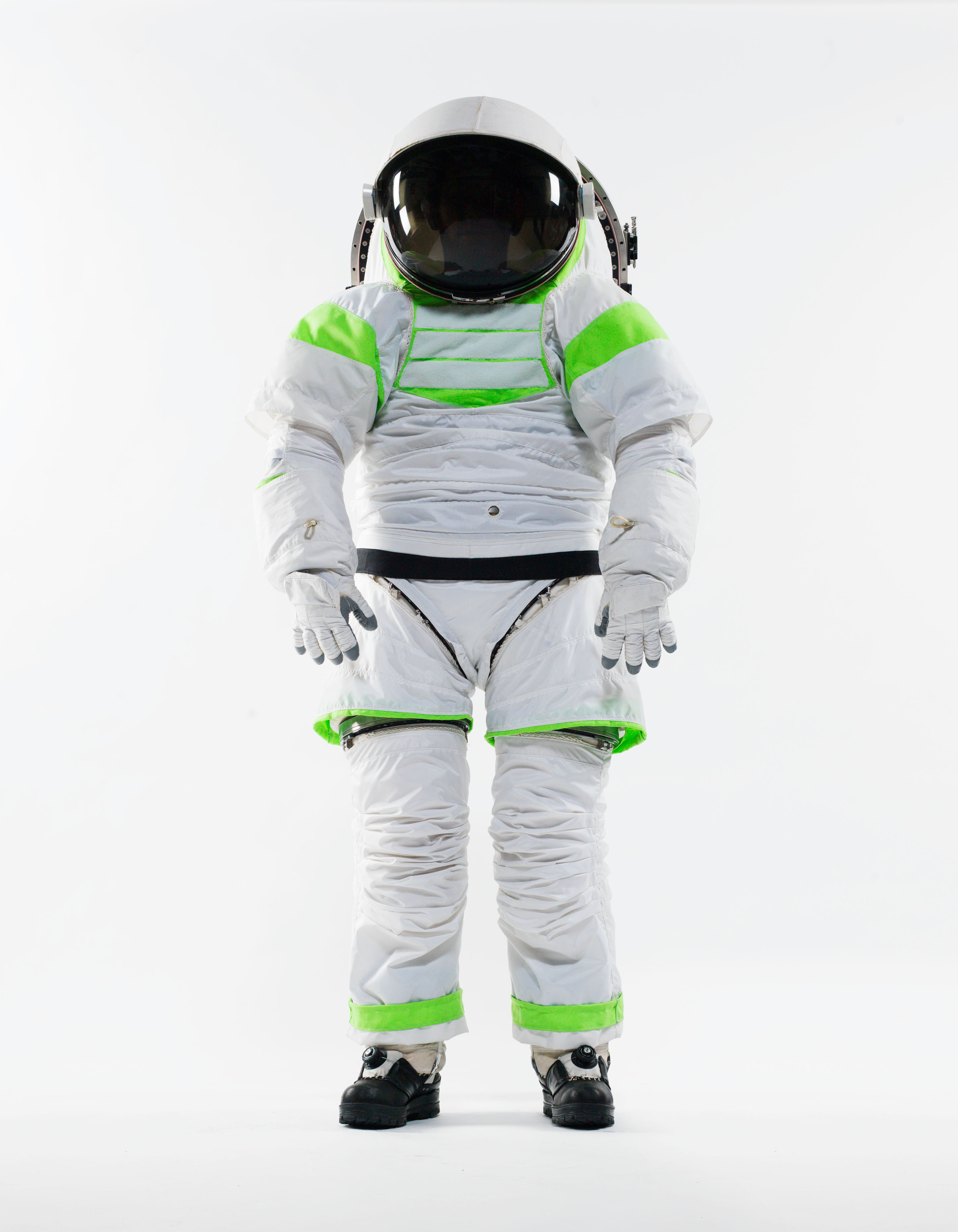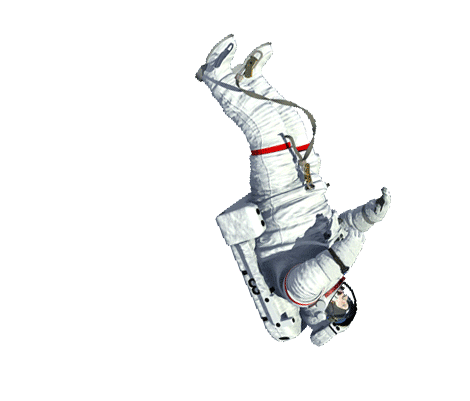Project Mercury- May 11th, 1959
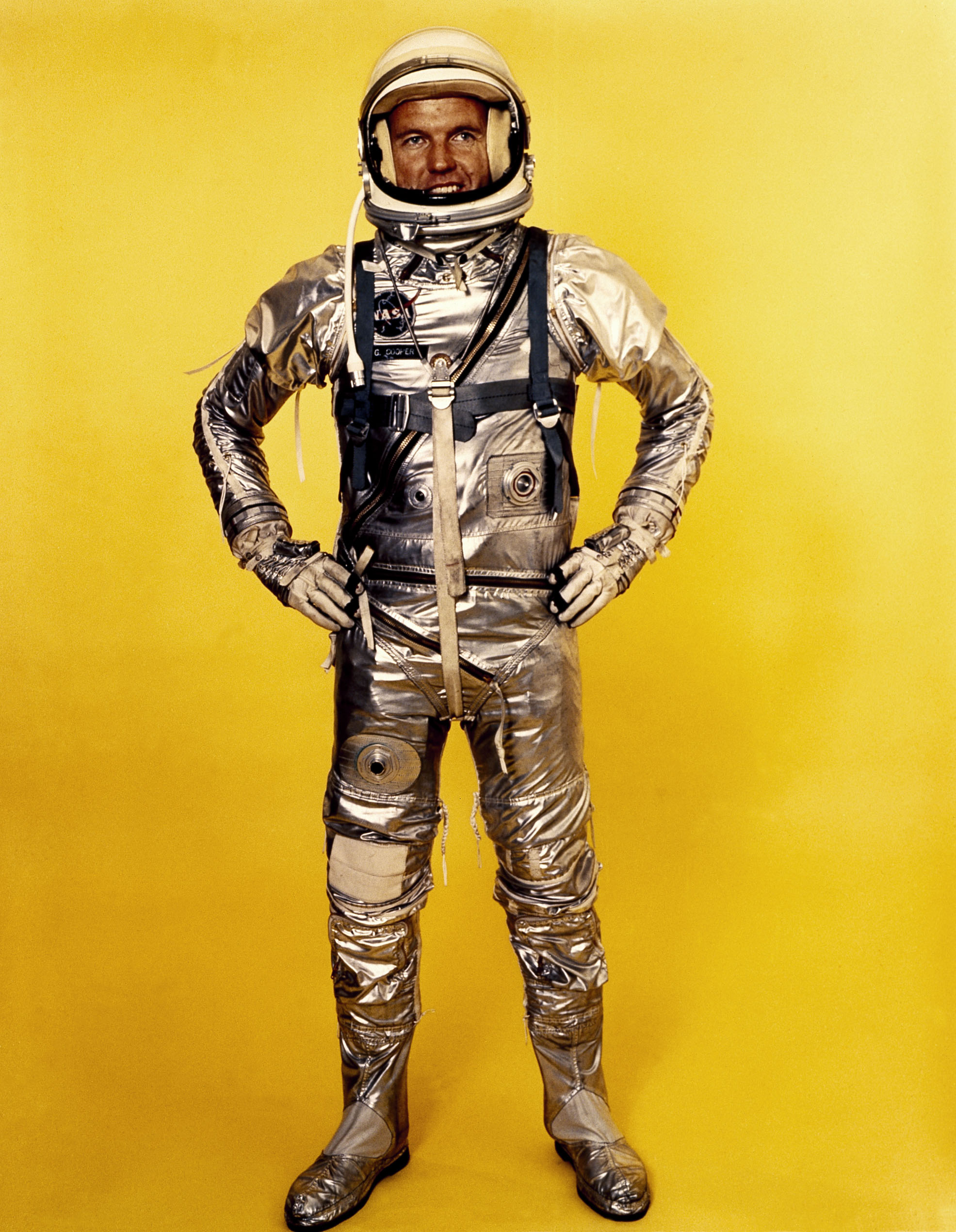
The first spacesuit designed for humans. In reality the suit is just a modified high altitude and pressure jet suit. They added Neoprene coated nylon on the inside of the suit and aluminized nylon on the outside. On February 20th, 1962, Astronaut John Glenn was the first American to orbit the earth in the Project Mercury Orbit mission. He did so in the Mercury suit.
